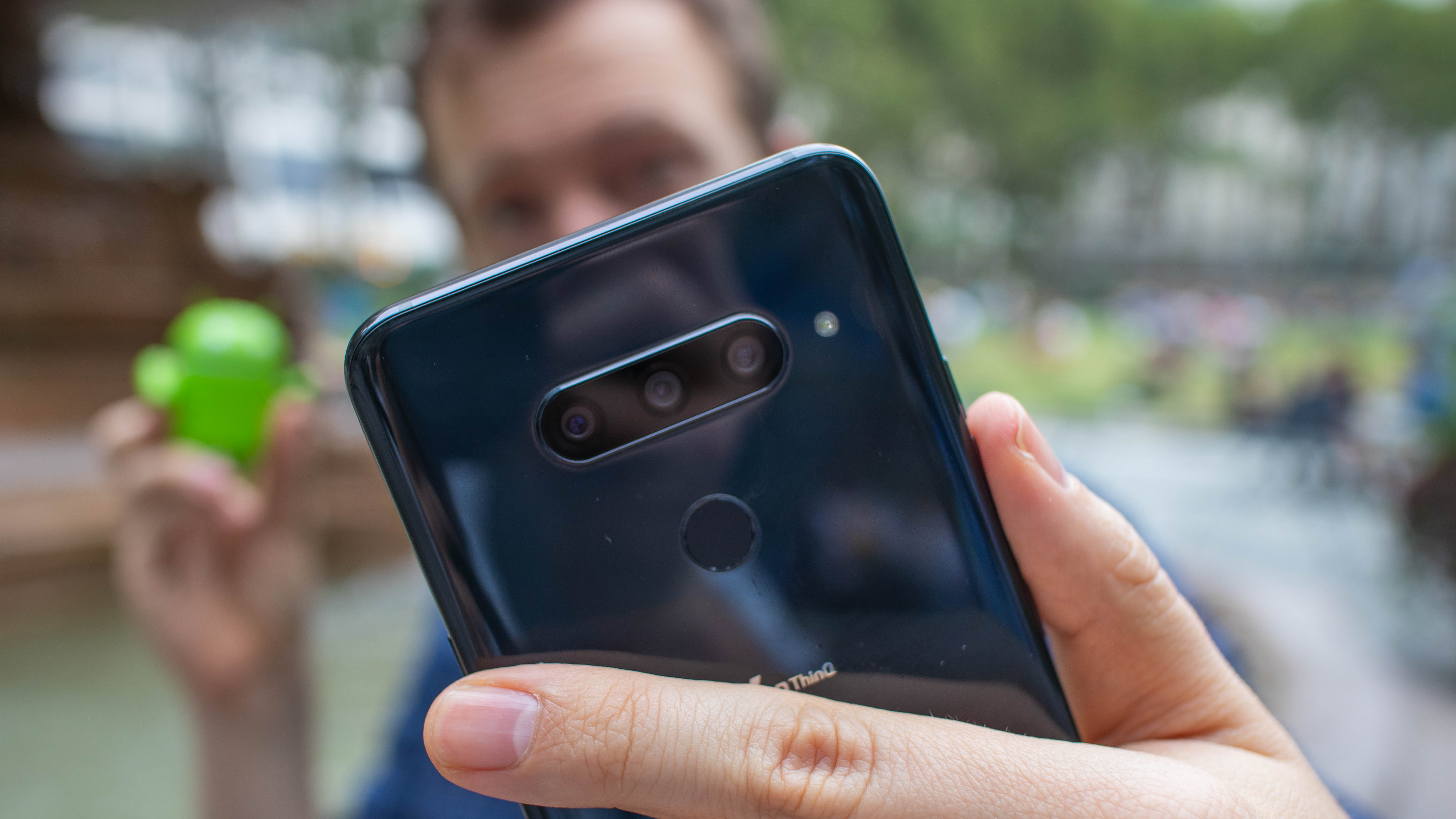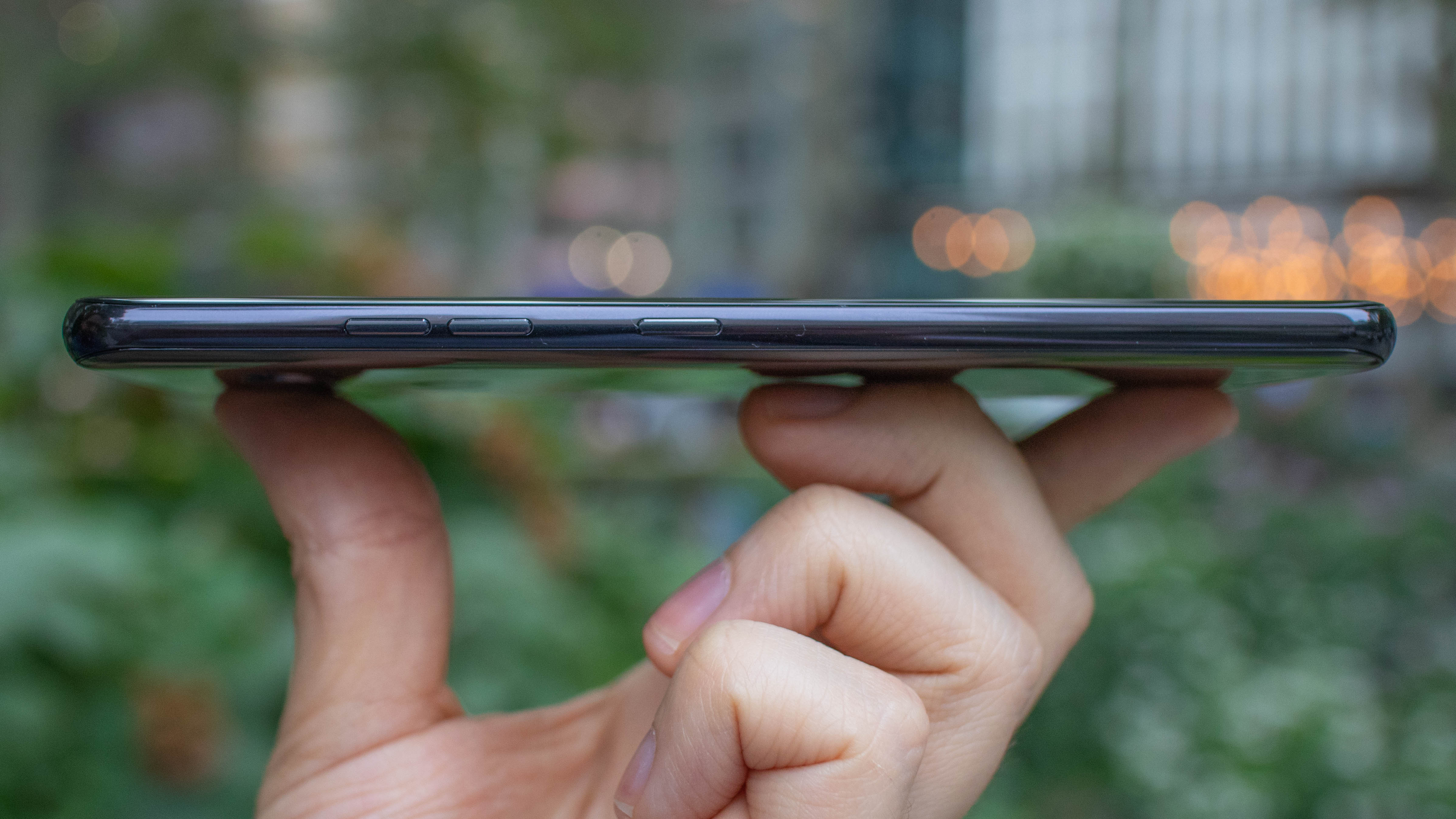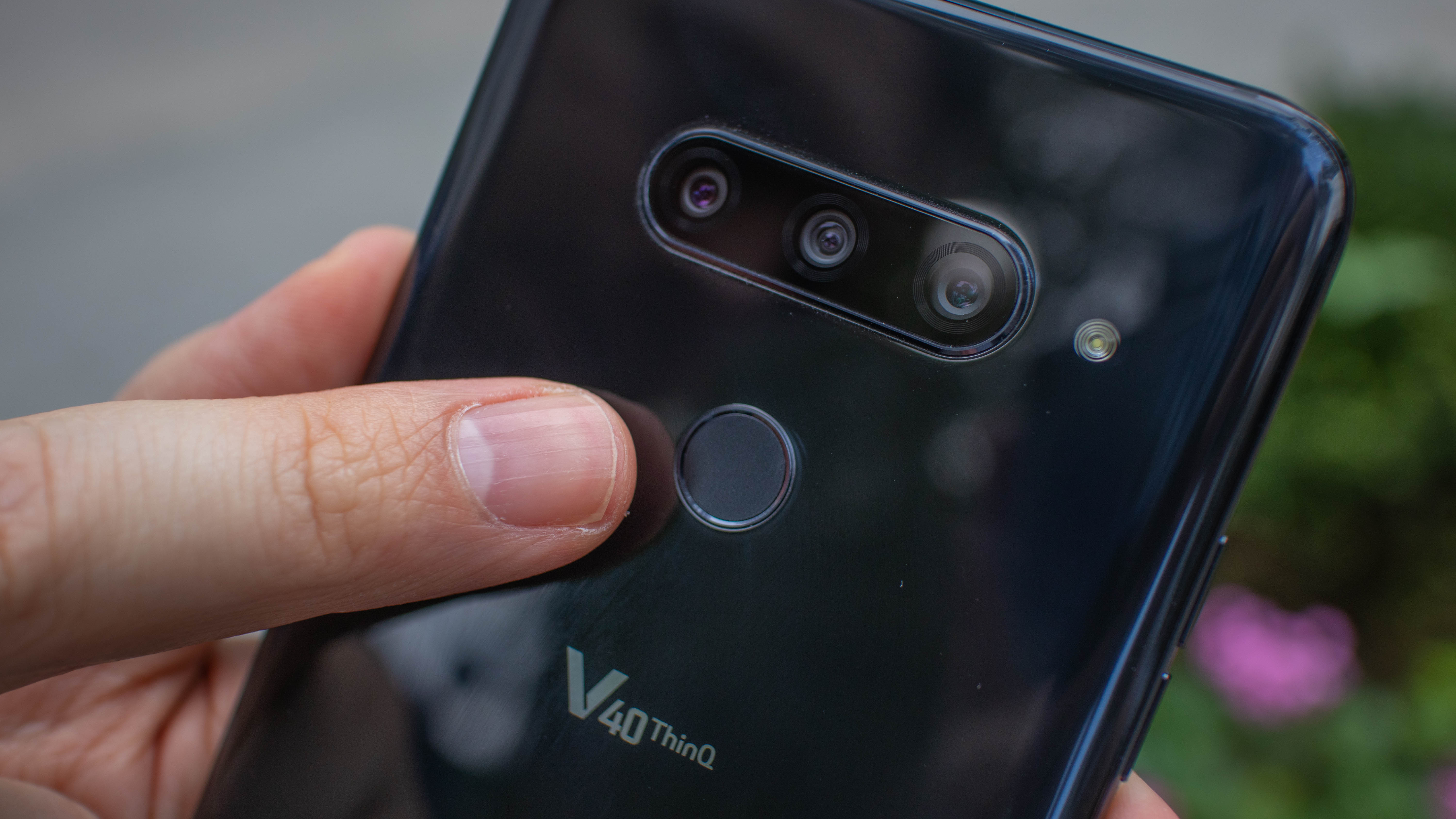TechRadar Verdict
The LG V40 puts photography first with five cameras on a single Android phone, and that gives you varying shot perspectives, whether you’re taking a wide group selfie or rear-facing telephoto masterpiece. You’ll love seeing the camera modes and various tricks play out on the beautiful 6.4-inch OLED screen, though competing handsets take cleaner pictures, have longer battery life and, in many cases, are cheaper.
Pros
- +
Five cameras for new perspectives
- +
Fun still and video camera modes
- +
Light, yet reassuringly solid design
Cons
- -
Camera isn’t always the best
- -
More expensive than it should be
- -
Weaker-than-necessary battery
Why you can trust TechRadar
Update: We've updated the LG V40 camera section to include new findings about the telephoto lens, which causes zoomed-in photos to exhibit blurriness, a possible flaw. Be sure to read our experience on Page 2.
The LG V40 ThinQ is the first phone to squeeze an outrageous five cameras into a single device to give you more shooting options – even if you think you already have enough photo choices. This also happens to be the perfect metaphor for LG’s ambitions in a smartphone market dominated by Apple, Samsung, Huawei and a few others. It's another option whether you think you need one or not.
Luckily, the LG V40 has a few camera tricks to keep it from being an also-ran Android phone, unlike this year’s unsurprising, risk-averse LG G7 ThinQ. It captures larger pixels and combines a regular, telephoto, and a super-wide-angle camera in a rear three-camera array. There’s also a normal and wide-angle camera pair on the front for selfies and group selfies, respectively.
You’re getting five different perspectives from the LG V40 cameras, and several unique modes. Triple Shot simultaneously snaps pictures from all three rear cameras, so you don’t have to worry about which lens is best for a particular shot. Cine Shot allows you to create six-second cinemagraphs to partially animate still photos. And Cine Video, first seen on the LG V30, is back to make it easier to fluidly zoom in anywhere, not just the dead center of the camera screen.
The LG V40 has a lot of cameras, and plenty of ways to put them to good use, even if we aren’t going to crown it the best camera phone of all time. It does prioritize faces nicely compared to its competition, but too often it blows out backgrounds, even with HDR mode enabled. We tested it against the Samsung Galaxy Note 9, iPhone XS Max, and Google Pixel 2 XL.

Playback, and all multimedia, look great on LG’s expansive, color-rich 6.4-inch OLED screen with HDR10 compatibility. You won’t mind the small notch cut out at the top, and you can black-out the display ‘ears’ flanking the notch if you’re really against this trendy design quirk. It’s also among the fastest Android phones we’ve tested thanks to the Snapdragon 845 chipset and 6GB of RAM, and it’s one of the few that has a headphone jack, a powerful speaker, and a microSD card slot.
The LG V40 is noticeably lighter than its large-screen smartphone competition, and yet it doesn’t feel cheap in the hand. It’s the weight of a sizable plastic phone, with all the benefits (and risks, in terms of potential dings and scratches) of a premium, all-glass design. There’s some nice polish here, even if the black version we tested is inescapably a fingerprint magnet.
Sign up for breaking news, reviews, opinion, top tech deals, and more.
Unfortunately, LG has also gone lighter in the battery department and heavier on the price than we were hoping. You’re going to barely get all-day battery life from this handset, and yet you’ll pay nearly as much for it as for an iPhone XS or Samsung Galaxy S9 Plus; for a little more money you can get a bigger battery in an only slightly heavier phone, which seems like a fair trade-off.
The LG V40 camera is a lot of fun to play with thanks to its telephoto and super-wide-angle cameras, but better image quality can be had from other smartphones. Like the LG G7 ThinQ, the LG V40 will be a more interesting proposition once it gets discounted than it is at launch. Neat camera tricks only get you so far.
Release date and price
The official LG V40 release date is Thursday, October 18, while pre-orders started on October 3 in the US. This schedule may differ in other regions, and depend on your local carrier. But wherever you are, LG risks having its thunder stolen by the imminent Google Pixel 3 and Google Pixel 3 XL launch on October 9.

The V40 is more expensive than it should be, really, costing anywhere from $900 to $980 in the US. The T-Mobile version costs a middle-of-the-road $920, while Verizon has it for $980. We’re waiting on the confirmed UK price, and to see how much it costs in other regions.
In the US, we can already tell you that it costs more than the similarly sized Samsung Galaxy S9 Plus ($840), but less than the iPhone XS ($1,000) and iPhone XS Max ($1,100).
Design and display
The LG V40 design takes cues from the iPhone XS Max and the Galaxy S9 Plus, almost as if this was a ‘What if Apple and Samsung merged’ concept video.

It has a virtually all-screen 6.4-inch OLED screen on the front with that small notch cut-out at the top, making its face look like the iPhone X and every Android clone since. The notch is easy to ignore, with enough room to fit the two front-facing cameras and a smaller earpiece speaker. There is slightly more bezel around the sides and chin than on an iPhone, but you’ll only see the difference in a side-by-side comparison.
The subtly curved glass of the LG V40’s front and back meet at a metal frame, echoing the Samsung Galaxy Note 9 look, albeit without the curved screen, which remains flat and doesn’t follow the subtle front glass curve to slip over the sides.

Distinguishing features include the triple-lens camera on the back, the two small cameras on the front, and the fact that all of this weighs just 168g. It’s noticeably lighter than the Samsung Galaxy Note 9 (201g) and the iPhone XS Max (208g).
The LG V40 is your flagship smartphone on a diet, and that’s an admirable feature, although its lack of heft is clearly a factor in its mediocre battery performance later on in the review. LG’s design team somehow keeps winning out over the specs department when it comes to the ‘size and weight vs battery life’ argument.
LG V40 colors include Aurora Black and Moroccan Blue in the West, though there are additional colors like red and gray available in other countries. The Aurora Black version we tested is shiny as a mirror – and equally fond of your fingerprints. You’ll muddy this phone up in just a few seconds without an LG V40 case.
The power button returns to the right side of the phone – a switch from the LG V30 and other V series phones before it, which had the rear fingerprint sensor button pulling double duty as a power button and a form of authentication. Now the rear sensor is just a pad for unlocking the phone, and the new clicky side power button is dedicated to sleep/wake.

Also new to the V series is the dedicated Google Assistant button, matching what we saw on the LG G7. This summons Google’s AI voice assistant, which is smarter Samsung’s terrible Bixby AI. But you’re still bound to accidentally hit the button, mistaking it for the volume-down key that sits right above it. The Google Pixel 2 and HTC phones have the right idea, with the less problematic squeeze-the-lower-body mechanic for calling up Google Assistant in a pinch.
The LG V40 has just one speaker, but we found it gets plenty loud thanks to its Boombox Speaker concept. We saw this with the G7, too – inside, the entire back of the phone is dedicated to a resonance chamber. You’ll also find a 32-bit Hi-Fi Quad DAC and DTS:X 3D Surround Sound, continuing the V series tradition of offering some of the best audio on a phone when you’re using it with headphones.

